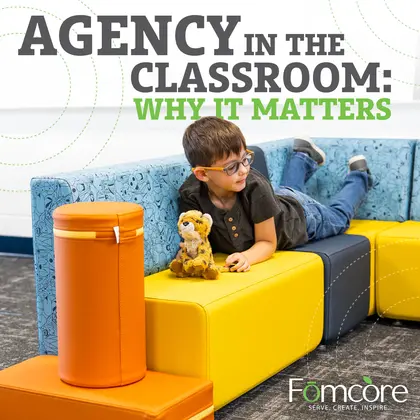Loading...

Agency in the Classroom: Why it Matters
In today’s education landscape, the concept of student agency is gaining significant attention. But what does it really mean, and why is it becoming a priority for educators, administrators, and school designers alike?
Understanding Student Agency
Student agency is about giving students the autonomy to take charge of their learning journey. Instead of being passive recipients of information, students become active participants—setting goals, making decisions, and guiding their own educational paths. It shifts the classroom dynamic from a teacher-centered model, where the educator controls most aspects of learning, to a student-centered environment where learners have a greater voice in how they learn.
The Importance of Student Agency
Empowering students with agency brings numerous benefits. It fosters a sense of ownership and accountability, which in turn increases motivation and engagement. When students have the freedom to make choices, they develop vital skills like self-management, decision-making, and perseverance.
Research shows that students who feel more in control of their learning process are more willing to embrace challenges and persist through difficulties. This sense of empowerment often translates into improved academic performance, as students actively seek out resources, advocate for themselves, and become more invested in their success.
What Does Student Agency Look Like in Action?
Student agency can be incorporated into classrooms in various ways. It might involve providing students with choices for assignments, allowing them to pursue topics they find interesting, or letting them set their own pace. For example, in a science class, students might select from different hands-on experiments that capture their curiosity. In a literature class, they could choose which book to read from a list, leading to deeper discussions and a more personalized learning experience.
Another effective method for fostering student agency is through collaborative projects. In these scenarios, students take on leadership roles and work together to solve real-world problems. This approach not only builds teamwork and communication skills but also helps students understand the value of their unique contributions.
Designing a Physical Environment That Encourages Student Agency
Encouraging student agency goes beyond teaching strategies—it extends to the design of the physical learning space. A flexible, dynamic classroom environment can empower students to take ownership of their surroundings. Providing modular and moveable seating options, for example, enables students to create their own learning setups.
This might look like rearranging seating into small groups for discussion, combining tables for collaborative projects, or creating a quiet corner for individual focus. These adaptable spaces show students that their preferences are valued and that they have the power to shape their learning environment.
Building Classrooms Where Students Thrive
A classroom that promotes student agency is one where students feel empowered, engaged, and appreciated. It’s a space where they can make choices, pursue their interests, and actively participate in their own education. By combining thoughtful teaching practices with a dynamic physical space, educators can create environments where students don’t just learn—they take charge of their learning journey.
Integrating student agency into the classroom does more than enhance academic success—it equips students with the mindset and skills they need for the future, preparing them for a world full of possibilities and challenges.
References:
George Lucas Educational Foundation. (n.d.). What is Student Agency? Edutopia.
Learning Policy Institute. (n.d.). The Impact of Student Agency on Learning Outcomes.
Human Spaces. (n.d.). How Biophilic Design Improves Student Well-being.
Association for Supervision and Curriculum Development. (n.d.). Empowering Students: The Case for Student-Centered Learning.
University of Salford. (n.d.). The Role of Classroom Design in Student Engagement.